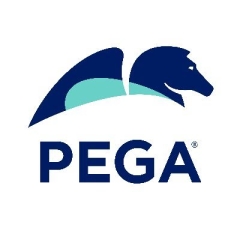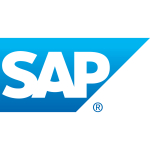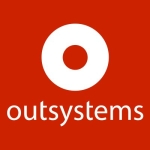What is our primary use case?
Pega BPM is a business process management tool, and a use case for it is case management. There's a problem statement; for example, for bank support, where you need to work on customer onboarding, you'll find customer details verified by a bank authority. Once the detail is verified, the customer will be onboarded. Pega BPM will handle the three steps or stages. You have to create a case where onboarding will be one stage, verification another stage, and then customer registration as another stage, and Pega BPM takes care of the stages or process model.
How has it helped my organization?
Pega BPM is very user-friendly, and business people won't have to do a lot of configurations on it. The Pega team also came up with App Studio.
With every release of Pega BPM, new features and modifications emerge, enabling business people to do many things, which helps improve the organization.
What is most valuable?
The most valuable feature of Pega BPM is step-by-step voice guidance that converts your problem statement into different diagrams and then implements the process.
Pega BPM is a technology, not merely a tool, so it has different industry frameworks. It's customized for various industries, such as financial, insurance, healthcare, etc.
Other valuable features of Pega BPM include AI, decisioning, and robotics. It also has a more intuitive UI. Clients weren't as happy with the UI in the past, but that has now improved.
I also like that Pega BPM has a UI that can be integrated with JavaScript-based, such as React or Vue.
What needs improvement?
An area for improvement in Pega BPM is security. It's secure, but it still has a lot of vulnerabilities, though Pega takes care of security through upgrades and different patch versions released from time to time.
Pega BPM is robust, but it still needs some improvement performance-wise.
Buyer's Guide
Pega Platform
April 2025
Learn what your peers think about Pega Platform. Get advice and tips from experienced pros sharing their opinions. Updated: April 2025.
850,671 professionals have used our research since 2012.
For how long have I used the solution?
I've been using Pega BPM for twelve years.
What do I think about the stability of the solution?
There shouldn't be any issues with Pega BPM stability-wise as it's the number one BPM tool in the market, and it's been in the market for forty years. It's pretty stable, though when there's a new version released, sometimes, there's an issue, and the Pega BPM team quickly resolves that.
What do I think about the scalability of the solution?
Pega BPM is scalable. You have horizontal and vertical scalability. One type of scalability is just adding servers. Pega BPM is Java-based and runs on JMS, so you can add different servers. You can add other nodes, or in one node, you can have different JMS, so in this way, you can increase the processing power easily.
Another way to scale is classifying nodes, so based on the job, you can run the nodes and also run the different functionalities of Pega BPM, which is another process for scaling it up.
Scaling Pega BPM isn't challenging because it's running on the cloud, so you can always add and subtract nodes as needed. If your Pega BPM is on-premise, you can scale it horizontally or vertically. It supports both horizontal and vertical expansions.
How are customer service and support?
I've contacted the Pega BPM technical support team many times because of issues I found in the tool that only the Pega core team can handle. I create a service request, then a person from the Pega BPM technical support team will be assigned to the case, then I'll work with that person.
It's normal in a day to experience an issue, need modification, or get help from Pega support. The support process is pretty streamlined. You have to go to the Pega website, create a service request, and immediately someone will be assigned to your ticket, and he will get in touch with you. Quickly, you can get into a call with support and talk to him, so technical support isn't an issue.
My Pega BPM technical support rating is seven out of ten because you don't get to talk to an expert on the first call. If your issue isn't resolved in the first call, then that's the only time you'll get an expert. Otherwise, Pega's support is good.
How would you rate customer service and support?
Which solution did I use previously and why did I switch?
Pega BPM is the number one tool in the market, so the only reason a client switches over to another BPM tool, such as Appian and IBM, is purely because of finances and nothing else. Functionality-wise and feature-wise, other BPM solutions aren't at the same level, not even close to Pega BPM.
In my fifteen or sixteen years in the software industry, I've never seen a client move to another solution because Pega BPM isn't a good tool. Clients always switch from Pega BPM to another tool because of the cost.
How was the initial setup?
Pega BPM is easy to set up, particularly its cloud version, because Pega will help you do all the setup. Pega also provides a JAR file that you can import to your database, and then once the connection is established, you can start using Pega BPM, so the setup is easy.
Infrastructure setup is different when you do it on-premises. Setting up Pega BPM on the cloud is easier.
What was our ROI?
There's ROI from Pega BPM because it expedites time to market. You can also complete your work based on a Java tool faster when you use Pega BPM within three months, for example, rather than one year.
Businesses get ROI from Pega BPM, which is why many financial institutions use it, for example, Bank of America, JP Morgan, Wells Fargo; you name it.
What's my experience with pricing, setup cost, and licensing?
The costing model for Pega BPM is different. One is a license that you can pay yearly. Another licensing model for Pega BPM is based on the number of cases you create in production in a year. Costing based on use cases is also available for Pega BPM. I don't have information on its exact pricing or costs, though.
What other advice do I have?
I handle different projects that use Pega BPM. Some use version 8.5, while others use 8.7. I also have some using version 8.8 of Pega BPM.
Pega BPM is deployed differently for different projects. Some on the public cloud and Pega Cloud on AWS. Some deployed Pega BPM on-premises, while others deployed the solution on a private cloud. All three versions of infrastructure can be used for Pega BPM.
My organization is a pure Pega organization, so out of one thousand people, at least six hundred people within my organization work on Pega BPM, but my organization is a service organization with different clients. It's an elite partner of Pega, and only ten elite Pega partners exist worldwide.
My rating for Pega BPM is eight out of ten.
Which deployment model are you using for this solution?
Hybrid Cloud
Disclosure: My company has a business relationship with this vendor other than being a customer: Partner






















